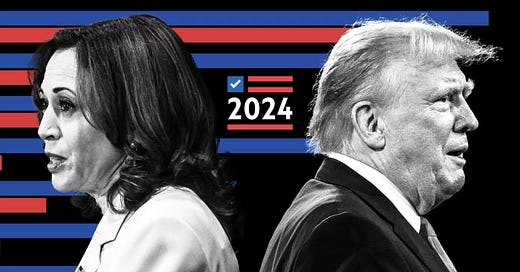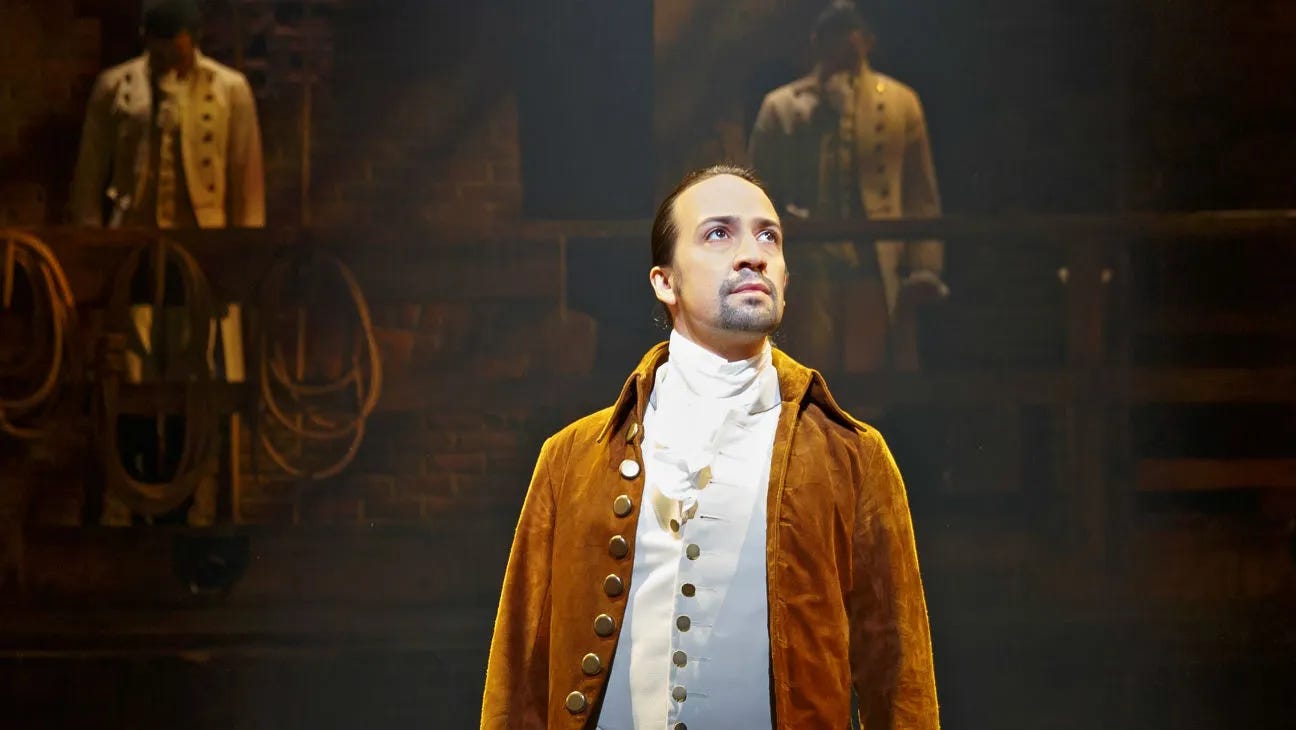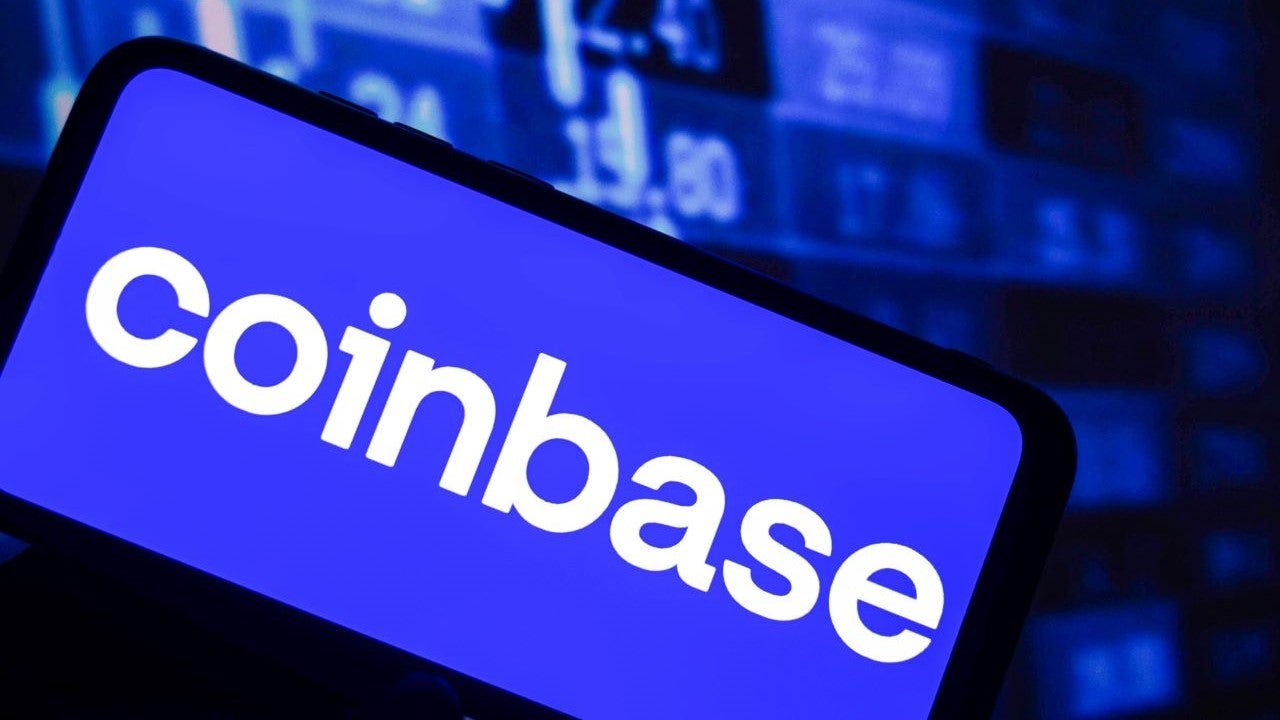Democracy for Sale
How Political Advertising Has Shaped and Manipulated Democracy, from the Early Republic to Today
Political advertising in the United States has come a long way. What began as dignified—if occasionally smug—appeals to voters has transformed into a spectacle of spin, sleight-of-hand, and media theatrics. Today’s campaigns don’t just pitch candidates; they sell dreams, stoke fears, and bend “truth” to fit a narrative. Join me as I trace the evolution of political ads, from ink-stained pamphlets to the algorithm-driven influence machines shaping modern elections.
Foundations and the Early Republic (1789–1820s): Campaigning with Class (or Pretending to Have Some)
In the early days, “campaigning” as we know it was almost unheard of. Candidates considered it undignified to actively seek votes. Instead, they relied on pamphlets and letters—such as The Federalist Papers by Alexander Hamilton, James Madison, and John Jay, which provided the first example of a major political “ad” campaign, attempting to sway public opinion in favour of the Constitution.
This era emphasised principle over persuasion, but the media’s impartiality was always a bit of a myth. Newspapers quickly aligned with political factions, printing “articles” that often functioned as early attack ads. As early as 1800, Federalist newspapers labeled Thomas Jefferson an “atheist,” while pro-Jefferson papers accused John Adams of having a “monarchical ambition”.
The Rise of Print and Partisan Newspapers (1820s–1860s): When Candidates Got (a Little) Dirty
As voting expanded to more white men, candidates had to broaden their appeal, and newspapers became central to that effort. The 1828 election between Andrew Jackson and John Quincy Adams is a prime example of this shift. Jackson’s supporters branded Adams as an elitist, while Adams’s camp responded by calling Jackson a violent, lawless man. “He cannot be trusted with the reins of government,” wrote one pro-Adams paper. Jackson won by a landslide, proving the power of early mudslinging tactics.
The introduction of slogans was also transformative. Tippecanoe and Tyler Too became the first widely recognised political slogan during William Henry Harrison’s 1840 campaign, designed to appeal to common voters with a memorable chant. It showed that messaging could be simplified, and that catchy phrases could sometimes be more powerful than policy.
Post-Civil War and the Gilded Age (1860s–1900): Big Money, Big Promises, and the Original Pay-to-Play Politics
After the Civil War, political campaigns moved from local to industrial scales. By the Gilded Age, corporate money had become essential, with industrial titans pouring funds into campaigns. In 1896, for example, Republican candidate William McKinley’s campaign manager, Mark Hanna, raised an estimated $3.5 million (worth nearly $110 million today) from big business interests, including Standard Oil, to defeat populist William Jennings Bryan. Hanna famously said, “There are two things that are important in politics. The first is money, and I can’t remember what the second one is.”
Political cartoons became powerful tools in this era, with Thomas Nast’s cartoons portraying Tammany Hall’s “Boss” Tweed as a symbol of corruption. His depictions were so effective that Tweed reportedly said, “Stop them damn pictures. I don’t care so much what the papers say about me. My constituents can’t read. But, damn it, they can see pictures”.
The Progressive Era and Radio (1900–1930s): Entering Voters’ Living Rooms (and Brains)
The early 20th century brought with it a new medium: radio. Warren Harding, who reportedly spent $8 million (over $100 million today) on his 1920 campaign, was among the first to use it, but Franklin D. Roosevelt turned radio into an art form with his “fireside chats.” One listener, in a letter preserved by the FDR Presidential Library, wrote, “For the first time, we feel like Washington understands us” . Radio created an intimacy that campaigns realised could bypass policy concerns entirely and build personal trust with voters.
However, radio could also be wielded negatively. In the 1934 California gubernatorial race, Upton Sinclair, a socialist writer, was attacked by fake “news reports” on radio that painted California in chaos should he win. These early smear campaigns foreshadowed the fear-based tactics political advertising would embrace wholeheartedly.
The Television Age (1940s–1960s): Lights, Camera, Manipulation
Television was revolutionary in political advertising, pushing candidates to present an appealing image. The 1960 Nixon-Kennedy debate illustrated this shift. According to a Gallup poll, 88% of television viewers thought Kennedy won the debate, while radio listeners leaned toward Nixon.
Then came iconic TV ads like Eisenhower’s Ike for President jingle in 1952 and Johnson’s Daisy ad in 1964.
The Daisy ad, which suggested that Goldwater’s policies could lead to nuclear disaster, was pulled after one airing but was reported to have influenced millions with its shock value.
“These are the stakes,” Johnson’s ad famously concluded, foreshadowing today’s widespread fear-mongering approach in ads.
Post-Watergate Cynicism and Negative Ads (1970s–1980s): Attack First, Explain Never
In the post-Watergate era, Americans were already cynical about politicians. Campaigns leaned into this sentiment by making attack ads the new standard. A famous example is the Willie Horton ad, which portrayed Democrat Michael Dukakis as “soft on crime” by focusing on Horton, a Black convict who committed violent crimes while on furlough.
The ad sparked controversy for exploiting racial fears and has since been studied as a watershed moment in attack ads.
Roger Ailes, who would later go on to found Fox News and shape political media, once remarked, “If you can get a message into a 6-second gut reaction, you can rule the world”. Campaigns took this lesson to heart, crafting ads meant to stir visceral reactions rather than appeal to logic. By the 1980s, ads were practically expected to be divisive and emotionally charged, capitalising on the power of instinctive responses over reasoned judgment.
The Cable News Boom and the 24-Hour News Cycle (1990s–2000s): Always On, Always Sensational
Cable news brought about the 24-hour news cycle, requiring campaigns to be “always on.” In the 2004 election, the Swift Boat Veterans for Truth ads attacked John Kerry’s Vietnam War service, despite numerous factual inaccuracies. According to The Washington Post, the group raised over $17 million to run these ads, which had a substantial impact on public perception.
This era marked the rise of soundbite culture, where candidates’ positions had to be condensed into five-second clips or sensational phrases. It was during this time that campaigns started tailoring ads to specific cable networks, using emotionally charged, partisan language to appeal to each network’s demographic.
The Social Media and Big Data Revolution (2010s–Present): Welcome to Hyper-Personalized Propaganda
Today, we’re in the age of hyper-targeted political ads thanks to social media and big data. In 2016, Cambridge Analytica collected data on 87 million Facebook users, micro-targeting voters with ads specifically crafted to appeal to their fears and values. According to research published in PNAS Nexus, data-driven campaigns using micro targeted ads can increase voter turnout by up to 1.66 percentage points in competitive districts, particularly among specific demographics, highlighting the effectiveness of hyper-personalised political messaging.
Political ads on social media have evolved far beyond informative messaging; they now thrive on a potent mix of outrage and fear. During the 2016 election, the Trump campaign mastered these tactics, releasing advertisements that emphasised themes like immigration, crime, and national security. One striking example was the “Two Americas: Immigration” ad, which depicted scenes of border crossings and warned of increased illegal immigration and security threats under Hillary Clinton’s leadership.
The ad painted a stark picture of two potential futures—one with Trump’s policies and one with Clinton’s—using intense imagery to stoke fear about border security. Interestingly, fact-checkers discovered that some footage in the ad was actually from Morocco rather than the U.S. border, raising questions about the accuracy of the narrative being pushed.
This wasn’t just about policy; it was a calculated attempt to tap into deep-seated anxieties about safety and identity. Facts may have been optional, but engagement was practically guaranteed. Platforms like Facebook and Twitter became stages for these ads, where campaigns used memes, shock tactics, and selective truths to maximise attention, blurring the lines between political persuasion and digital theatre.
2024 US Election: Big Money, Bigger Data, and Targeted Influence
As we look back on the history of political advertising, its influence is clear in the 2024 election, which ended with Donald Trump’s return to the White House. This cycle took every trick from past campaigns—fear-mongering, targeted messaging, corporate money, hyper-personalised ads—and fused them into one high-budget machine. In 2024, combined spending for the Presidential race reached $2.4 billion, with Harris’s campaign and PACs raising $1.39 billion and Trump’s campaign and affiliated PACs collecting $1.09 billion. That’s not to even mention the further billions upon billions of dollars spent on the various Downballot, Senate, House and Gubernatorial races.
Big Donors, Big Agendas
The largest corporate donors backed each candidate heavily, each bringing their own agendas into the election. According to OpenSecrets.org, Timothy Mellon, heir to the Mellon fortune, poured $160 million into Trump-aligned PACs, supporting deregulation and limited government initiatives, often through conservative or libertarian lobby groups.
Jeff and Janine Yass, co-founders of Susquehanna International Group, contributed $70 million to Trump’s campaign, supporting PACs advocating for school choice, low taxes, and deregulation.
On the Democratic side, Fred Eychaner of Newsweb Corporation supported Harris’s campaign. A dedicated liberal donor, Eychaner backs LGBTQ+ rights, media freedom, and civil rights policies through progressive advocacy groups.
The cryptocurrency sector also made its presence felt: Coinbase, Ripple, and Andreessen Horowitz contributed over $180 million to candidates sympathetic to crypto-friendly regulation, aiming to prevent restrictive regulations on digital finance.
These donors represent a complex network of interests working to influence U.S. policy, with corporate and private wealth shaping elections to embed specific agendas in each campaign.
With substantial backing secured, campaigns in 2024 crafted ads designed to speak directly to each voter’s specific fears, values, and concerns. Voters essentially received tailored versions of each candidate that resonated personally, while conveniently concealing any contradictions between targeted messages.
Influence of Streamers and Podcasters
For the first time in a major U.S. election, streamers and podcasters played a significant role in shaping the narrative. Both Trump and Harris recognised the power of these platforms to reach younger, tech-savvy audiences, leveraging streamers’ and podcasters’ wide influence to promote their messages in an informal, conversational setting that traditional media rarely achieves. From live-streamed Q&A sessions to podcast interviews, both campaigns used these platforms to connect with voters more directly.
Trump, already a familiar name on platforms like Twitch and Rumble, reached his base by appearing on popular conservative streams and podcasts. His appearances were often unscripted, giving a “direct-to-audience” feel that appealed to voters looking for authenticity. Meanwhile, Harris worked with progressive influencers and high-profile podcasters, joining interviews that discussed her policies on education, healthcare, and civil rights in ways that felt more approachable and relatable.
The engagement on these channels blurred the line between entertainment and political messaging, making complex issues more digestible for audiences. It also gave the candidates an unfiltered way to shape their images without the constraints of traditional sound bites. In 2024, streamers and podcasters were no longer just passive observers but active players in the election, giving both candidates a unique avenue to reach millions.
Misinformation, Deepfakes, and Ideological Bubbles
The 2024 election witnessed a significant surge in misinformation, propelled by AI-generated deepfakes and algorithm-driven echo chambers. Deepfake technology enabled the creation of hyper-realistic but entirely fabricated videos, making it increasingly difficult for voters to distinguish between real events and digital manipulations. Campaigns and independent groups alike used these tools to craft and spread misleading narratives, subtly altering videos to depict opponents unfavorably or to stoke fear and outrage.
Social media platforms became central hubs for these digital deceptions, where algorithm-driven feeds amplified content that played to users’ pre-existing biases, pushing voters further into ideological bubbles. Platforms rewarded the most sensationalist, emotionally charged content with heightened visibility, driving clicks, shares, and engagement without regard to accuracy or context. The result was an echo chamber effect, where many voters encountered only information that confirmed their beliefs, further polarising the electorate.
Beyond traditional campaign ads, social media overflowed with politically charged clickbait, crafted to maximise impact and generate outrage. Political influencers, Super PACs, and even anonymous groups contributed to this environment, each vying for influence in a pay-to-play spectacle where the voices with the deepest pockets and most sophisticated digital strategies held significant sway over public opinion. The combination of deepfakes, targeted misinformation, and monetised influence has made discerning reality a complex task, leaving voters to navigate an increasingly distorted landscape of political advertising.
Navigating the Noise: How Voters Can Stay Informed
As political advertising grows increasingly sophisticated, it’s essential for voters to develop strategies to navigate this landscape. Here are some ways to cut through the noise:
Approach Ads Critically: Most political ads are designed to evoke emotion. Question whether a message is providing substantive information or just stoking fear, anger, or optimism.
Fact-Check Claims: Use nonpartisan fact-checking sources like FactCheck.org, PolitiFact, or Snopes to verify political claims and avoid falling for exaggeration or misinformation.
Expand Your Sources: Relying on a single platform or media outlet can create bias. Seek out news and analysis from various sources to gain a broader perspective.
Pause Before Reacting: Political ads often use strong visuals and language to provoke immediate responses. Practicing “emotional distance” from such content helps avoid reactionary decisions.
A Call for Informed Democracy
Today’s democracy requires us to look beyond the surface of every ad, slogan, and “fact” presented, recognising that each has a purpose beyond simply informing. By approaching political advertising with a critical eye and broad perspective, we can make informed choices that uphold the principles of democracy in an era increasingly influenced by big corporate money and wannabe bond villains/tech billionaires.












